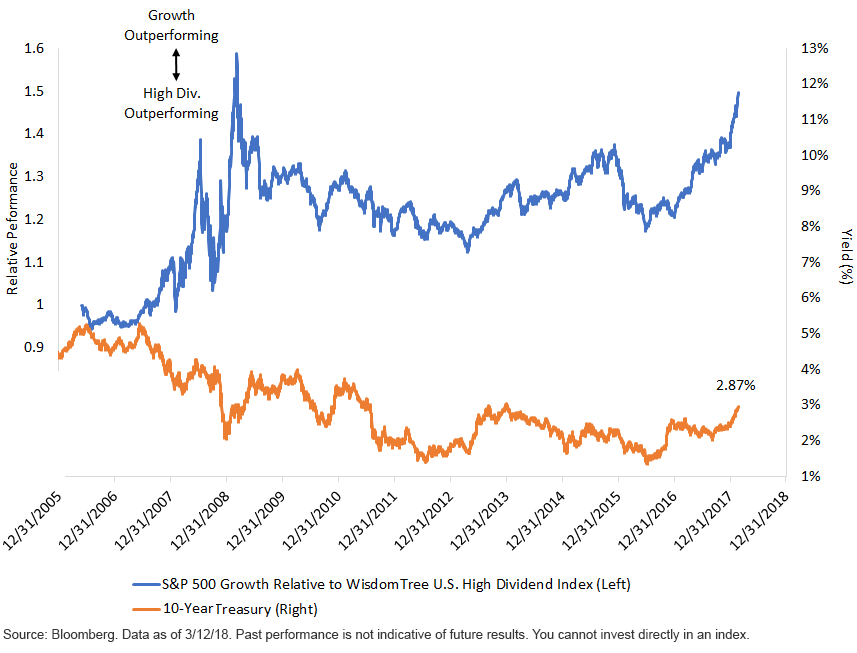
There is a market “truism” that needs to be set straight. In summary:
“Rising interest rates hinder high dividend equities.”
We’d rephrase it this way:
“Rising rates have been hindering high-dividend equities in the last couple of years, but over any sizable time frame, the causal relationship between rates and equity factors has been cursory at best.”
With that, see figure 1. It shows the S&P 500 Growth Index relative to the WisdomTree U.S. High Dividend Index since the birth of the WisdomTree U.S. High Dividend Fund (DHS) in 2006, along with 10-Year Treasury yields. Growth was outperforming big dividend payers in the years immediately preceding the global financial crisis, and it kept leading during the crisis. Throughout the middle of the decade, bond yields gyrated back and forth, ultimately halving. Yet high-dividend payers struggled, defying today’s popular notion that interest rate directionality is the determining factor of dividend stocks’ relative performance.
Growth stocks’ leadership run ended on March 11, 2009, just days after the stock market bottomed, and high-dividend payers began to outperform in the early years of the economic recovery. Despite improving business conditions, bond yields kept falling until 2012. Those three years were among the few that do appear to confirm the popular “truism.”
Figure 1: Interest Rates Are Not Always the Arbiter of Performance

Then, growth stocks reached their relative bottom on April 19, 2013. Treasury yields were 1.71%. While growth stocks outperformed for years from that point, interest rates yawned, chopping around and ultimately falling to 1.36% on July 8, 2016. Yet the thesis that falling rates help yield-oriented stocks was debunked during that more than a three-year spell. From April 19, 2013, to July 8, 2016—when rates were falling by 35 basis points (bps) to that generational low—the S&P 500 Growth Index posted a total return of 53.56% while the WisdomTree U.S. High Dividend Index rose “just” 45.12%, a gap of 844 bps (199 bps annualized).
















